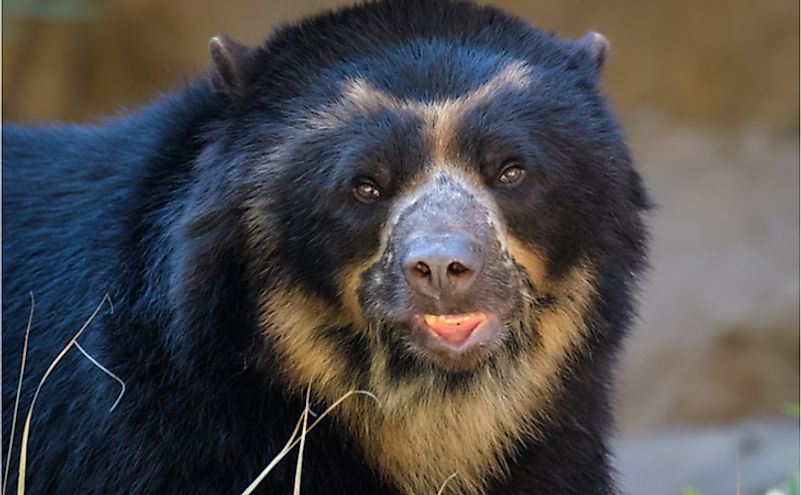Where Do Spectacled Bears Live?

The spectacled bear, also known as the Andean bear, is the smallest of the bear species and the last of the short-faced bears. Its closest relative is the now extinct Florida spectacled bear. The Andean bear is the only living species of bear native to South America. The IUCN classifies it as vulnerable due to the loss of its natural habitat.
Distribution And Habitat
The spectacled bear is restricted to western and northern South America, but a small population occasionally spills over into Panama. Their natural range extends across western Venezuela, Ecuador, Columbia, Peru, northwestern Argentina, and western Bolivia. The species can be found inhabiting the entire Andes Mountains. Before the population became fragmented in the last 500 years, the species was known for being adaptive as it is found in diverse habitats and altitudes including dry forests, scrublands, scrub deserts, and montane grasslands. A single Andean bear population on the border of Ecuador and Peru inhabited an extensive range similar to what is occupied by the entire population of brown bears. The most conducive environment for the spectacled bears is thick and humid montane forests between 1,600 and 3,300 ft above sea level because the wet and dense forests provide more and diverse food to support the population. Occasionally, they may be found below 820 feet and can even travel above the mountain snowline in search of food and to avoid a territorial conflict. The bear migrates between forests in search of fruits and soft plants. There is no conclusive data for the entire population of spectacled bears, but a recent survey of the Northern Andes excluding northern Argentina, Bolivia, and Peru put the figure at between 6,000 and 10,000 individuals.
Threats To Spectacled Bears
The main threat to the Andean bears throughout South America is degradation, loss of habitat, and hunting. Construction of infrastructural facilities such as rail and roads, deforestation, and the conversion of forest lands into grazing areas are responsible for habitat degradation, fragmentation, and loss. Unfortunately, protected reserves are not big enough to support large populations of these bears. Current land-use trends include logging and burning of forests to create farmlands alongside infrastructural development. This has resulted in a fragmented habitat of the bear to at least 100 patches between northern Peru and Venezuela.
The locals hunt the bear for varying reasons including fear, protection against attacks to crops and livestock, and culture. As a consequence, about 200 bears are killed annually. The bears are also hunted for body parts including the head, paws, and internal organs which are valued in traditional medicine and can fetch high prices. The market price of the bear’s gallbladder is estimated at US$150, which is more than three times the average monthly wage in Bolivia. Social conflict and poverty in these countries intensify the destruction of habitat since most people resort to farming coca and other illegal plants as a means of earning a living.











